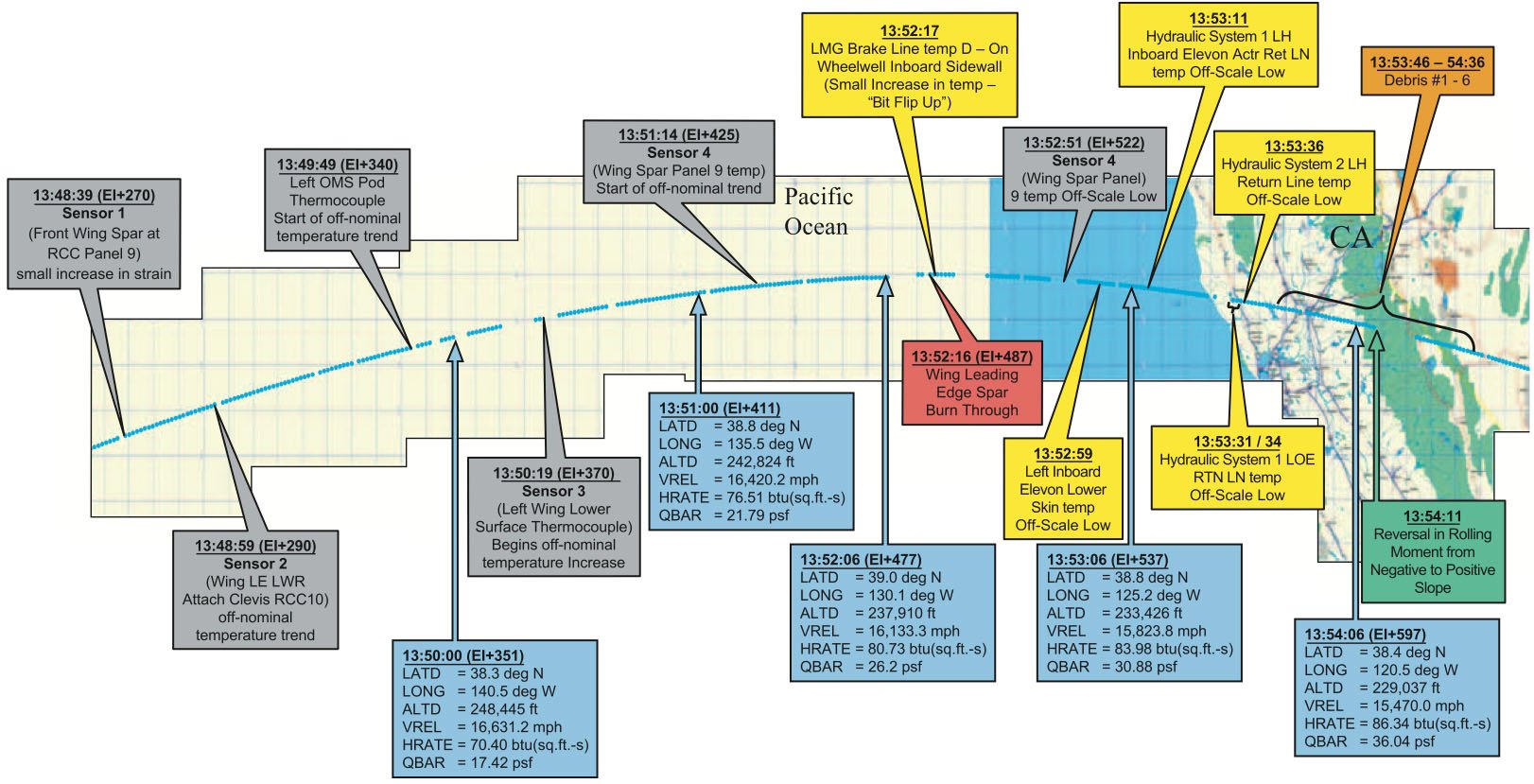


Captain Rick Douglas Husband, Pilot William “Willie” Cameron McCool, Payload Commander Michael P. The seven-member crew of STS-107 was preparing to come home after a successful 15-day mission.

Nothing unusual was anticipated that day at NASA. They only numbered a couple of hundred, compared to the thousands who had gathered to watch STS-1 land. Spectators had gathered to watch Space Shuttle Columbia make what was considered another routine landing. It was an ordinary morning at the Kennedy Space Center in Cape Canaveral, Florida. A Successful 15-Day Missionįebruary 01, 2003. The lessons learned remain as relevant today as they were in 2003, if only we can keep them alive and continue to learn from this modern tragedy. By reading this introduction, and the articles accessible from the sidebar, you will learn all the facts that led to this tragedy, its technical and organizational causes, its consequences on NASA and future human spaceflight programs, the lessons learned, and the precious testimony of people directly involved in the event. This section of Space Safety Magazine is dedicated to the Columbia disaster. Its impact on US human spaceflight program, and the resulting decision to discontinue the Space Shuttle Program, was so dramatic that to this date NASA has not recovered an autonomous human access to space. These types of failures are not technical failures per se, but failures in management to develop an organizational structure and internal culture that allows and promotes bad news to travel upward through management and ending with the organization’s leadership.The Columbia Disaster is one of the most tragic events in spaceflight history. Whether it be Volkswagen management involved in the emissions scandal, the Takata airbag scandal or the Flint, Michigan, water scandal, the root cause is failure of management to be open to and to address issues that are brought to their attention. This recounting of history from the trenches of the investigation is not just directed at NASA management, but management of all organizations. In summary, if the flight data would not have been available and experiments would not have shown that major damage could occur, NASA would still be denying the real cause for the catastrophe. There was no longer a basis to deny the cause. Then, on July 7, essentially on the last planned shot at SwRI, the foam blasted a hole through the RCC. After a number of shots did not significantly damage the RCC, management redoubled their belief that foam impact was not the cause. NASA enlisted Southwest Research Institute to conduct experiments firing foam blocks at the leading edge. They needed proof that foam could knock a hole in the RCC leading edge.

Management would still not accept that the cause could have been something that was dismissed as “accepted risk” for years. The flight data clearly showed the rapidly increasing temperatures near reinforced carbon-carbon, or RCC, wing panel 8 on the left wing. The turning point came when the flight data recorder was found on March 19. Even though early studies during the investigation began to support the argument that foam impact could cause serious damage to the wing, NASA management was adamantly and loudly against this cause. Insulating foam and ice had been regularly torn from the bipod ramp area on several previous shuttle flights. 1, there was suspicion that it could be due to the impact of foam on the wing leading edge. The Sandia team interacted with NASA management and staff during the investigation from February to August 2003.įrom the day of the event, Feb. I was a member of the Sandia National Laboratories team that was asked by NASA to help find the cause of the failure. To support my contention, it is necessary to briefly recount the accident investigation from my perspective. I believe the lessons learned from Columbia, as well as the loss of Challenger, should be much broader than just NASA, and should extend to all organizations.Īlthough the article discussed various technical, communication and management failures for the Columbia tragedy, I want to stress the root cause of the failure: management. It was an excellent summary of the loss of Columbia, the investigation to find the cause, and the training of new NASA employees regarding lessons learned. I was glad to see the article “Their mission became our mission” by astronaut Tom Jones in the January issue. Management role in Columbia tragedy March 2018


 0 kommentar(er)
0 kommentar(er)
